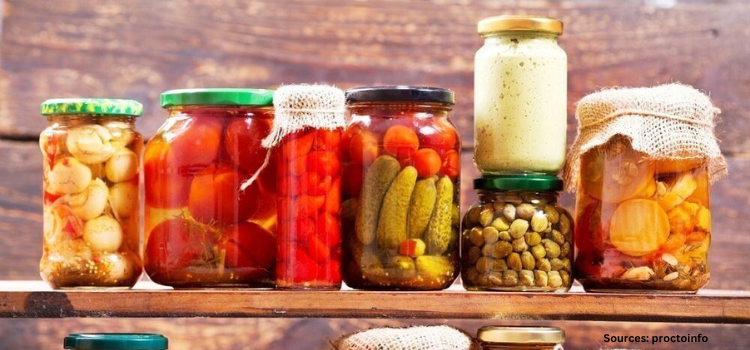
Frozen Vegetables Market by Product Type (Asparagus, Cauliflower, Broccoli, Green Peas, Mushrooms, Spinach, Corn, Green Beans, and Others), by Form (Whole, Sliced/Diced and Minced/Puree), by Nature (Organic and Conventional), by Freezing Technique (Individual Quick Freezing (IQF), Blast Freezing and Belt Freezing), by Distribution Channel (Online and Offline), by End-User (Food Service Industry and Retail Customers)- Global Opportunity Analysis and Industry Forecast, 2022-2030
US Tariff Impact on Frozen Vegetables Market
Trump Tariffs Are Reshaping Global Business
Market Definition:
The Frozen Vegetables Market size was valued at USD 33.36 billion in 2021 and is predicted to reach USD 49.99 billion by 2030 with a CAGR of 4.6% from 2022-2030.
Frozen Vegetables are stored at a very low temperature for the purpose of transportation and storage until they are being consumed. Their temperature is maintained below their freezing point in order to retain the essential nutrients, such as carotene, which is essential to synthesize vitamin A in the body. Preservation of vegetables by freezing also reduces their oxidation process. Business buyers such as hotels, caterers, restaurants, and fast-food chains are among major buyers of frozen food products including frozen vegetables, fruits, and non-veg items.
Market Dynamics and Trends:
The demand for frozen vegetables is rising due to growing dependency on readymade and convenient food products. Also, factors such as, changes in the lifestyle & food habits as well as rise in disposable income are expected to propel the growth of the market during the forecast period. Moreover, increasing awareness about the benefits of consuming frozen vegetables such as presence of plenty of fiber, quick & easy preparation, and wide availability are the factor aiding the growth of the market.
However, false perception among consumers that frozen vegetables are low in nutritional value and lack of freezing facilities in rural and semi-urban areas are projected to act as restraints towards the growth of frozen vegetables market. On the other hand, increasing investment into food storage facilities is expected to create lucrative growth opportunities for the frozen vegetables market players in future.
Market Segmentations and Scope of the Study:
The frozen vegetables market has been segmented based on product type, nature, end-user, distribution channel, and geography. Based on product type, the market is bifurcated into asparagus, cauliflower, broccoli, green peas, mushrooms, spinach, corn, green beans, and others. Based on nature, the market is divided into organic and conventional. Based on end user, the market is bifurcated into food service industry and retail customers. Based on distribution channel, the market is divided into discounters, supermarkets/hypermarkets, convenience stores, and others. Geographic breakdown and analysis of each of the aforesaid segments includes regions comprising of North America, Europe, Asia-Pacific, and RoW.
Geographical Analysis:
Europe holds the lion share of frozen vegetables market and is expected to continue dominating the market during the forecast period. This is attributed to factors such as rise in demand for convenience food, coupled with rapid growth in the food industry and strong purchasing power of consumers. Also, consumers in the region are becoming inclined toward vegan and healthy food as a part of lifestyle change. Moreover, there has been a considerable shift from high-fat food products to low-fat and high-protein vegetables and fruits. Hence, these trends are boosting market growth in this region.
However, Asia Pacific is expected to show a steady rise in the frozen vegetables market due to the increase in consumption of frozen foods. Also, rapid increase in number of large retail chains, including hypermarkets and supermarkets, propels the demand for frozen vegetables in this region.
Competitive Landscape:
The market comprises of various players such as ITC Limited, General Mills Inc., Mother Dairy Fruit & Vegetable Pvt. Ltd., Ajinomoto Foods, H.J. Heinz Company, Pal Frozen Foods, Frutteto, Shree Ganesh Frozen Foods Private Limited, Tanvi Foods Ltd., Himgiri Group, Crop's Vegetables, Hanover Foods Corporation, BC Frozen Foods, Nortera, HB Frozen Foods. These manufacturers are actively indulging in R&D initiatives, process innovations, and industrial collaborations to enhance their products and increase their geographical reach.
For instance, in June 2020, ITC Limited had announced that it would increase the sourcing of fruits and vegetables, that would help the company to strengthen its “Farmland” brand by catering to the emerging consumer demand for safe and nutritious food in the wake of the Covid-19 pandemic. The company has extended its product offerings under the Farmland brand by launching frozen vegetables such as peas, tomato, and onion. Also, in January 2021, Mother Dairy announced that they are planning to double their sales volume of safal frozen vegetables from the existing 5500 MT to 11000 MT in the next three years. The company is introducing drumsticks and cut okra in the frozen vegetable segment. Safal’s frozen vegetable range includes frozen peas, corn, frozen jackfruit, and mixed vegetables. These products will soon be made available across its 300 plus fruit & vegetable outlets in the National Capital Region, which will gradually be expanded to general retail outlets.
Key Benefits
-
The frozen vegetables market report provides the quantitative analysis of the current market and estimations through 2022-2030 that assists in identifying the prevailing market opportunities to capitalize on.
-
The study comprises a deep dive analysis of the frozen vegetables market trend including the current and future trends for depicting the prevalent investment pockets in the market.
-
The information related to key drivers, restraints and opportunities and their impact on the frozen vegetables market is provided in the report.
-
The competitive analysis of the market players along with their market share in the frozen vegetables market.
-
The SWOT analysis and Porters Five Forces model is elaborated in the study.
-
Value chain analysis in the market study provides a clear picture of the stakeholders’ roles.
Key Market Segments:
By Product Type
-
Asparagus
-
Cauliflower
-
Broccoli
-
Green Peas
-
Mushrooms
-
Spinach
-
Corn
-
Green Beans
-
Others
By Form
-
Whole
-
Sliced/Diced
-
Minced/Puree
By Nature
-
Organic
-
Conventional
By Freezing Technique
-
Individual Quick Freezing (IQF)
-
Blast Freezing
-
Belt Freezing
By Distribution Channel
-
Online
-
Offline
-
Supermarkets & Hypermarkets
-
Convenience Stores
-
By End-User
-
Food Service Industry
-
Retail Customers
By Geography
-
North America
-
U.S.
-
Canada
-
Mexico
-
-
Europe
-
UK
-
Germany
-
France
-
Spain
-
Italy
-
Netherlands
-
Denmark
-
Finland
-
Norway
-
Sweden
-
Russia
-
Rest of Europe
-
-
Asia-Pacific
-
China
-
Japan
-
India
-
South Korea
-
Australia
-
Indonesia
-
Singapore
-
Taiwan
-
Thailand
-
Rest of Asia-Pacific
-
-
RoW
-
Latin America
-
Middle east
-
Africa
-
Key Players:
-
ITC Limited
-
General Mills Inc.
-
Mother Dairy Fruit & Vegetable Pvt. Ltd.
-
Ajinomoto Foods
-
H.J. Heinz Company
-
Pal Frozen Foods
-
Frutteto
-
Shree Ganesh Frozen Foods Private Limited
-
Tanvi Foods Ltd.
-
Himgiri Group
-
Crop's Vegetables
-
Hanover Foods Corporation
-
BC Frozen Foods
-
Nortera
-
HB Frozen Foods
REPORT SCOPE AND SEGMENTATION:
|
Parameters |
Details |
|
Analysis Period |
2021–2030 |
|
Base Year Considered |
2020 |
|
Forecast Period |
2022–2030 |
|
Market Size Estimation |
Billion (USD) |
|
Market Segmentation |
By Product Type (Asparagus, Cauliflower, Broccoli, Green Peas, Mushrooms, Spinach, Corn, Green Beans, and Others), by Form (Whole, Sliced/Diced and Minced/Puree), by Nature (Organic and Conventional), by Freezing Technique (Individual Quick Freezing (IQF), Blast Freezing and Belt Freezing), by Distribution Channel (Online and Offline), by End-User (Food Service Industry and Retail Customers) |
|
Countries Covered |
28 |
|
Companies Profiled |
15 |

















 Speak to Our Analyst
Speak to Our Analyst





















